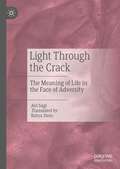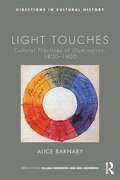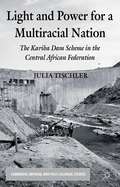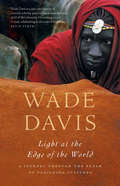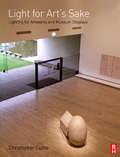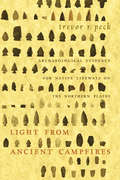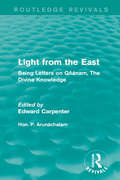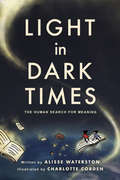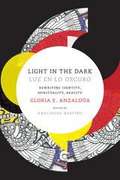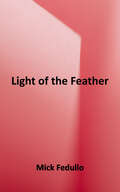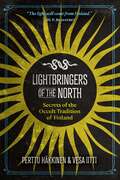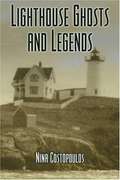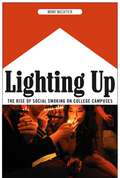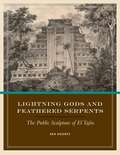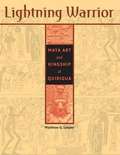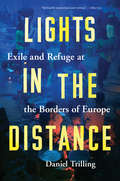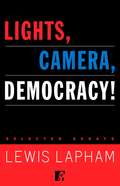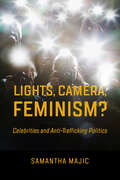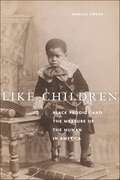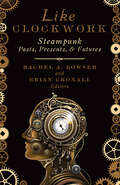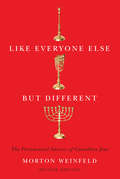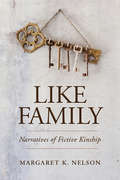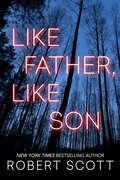- Table View
- List View
Light Through the Crack: The Meaning of Life in the Face of Adversity
by Avi SagiAn epidemic such as COVID-19 challenges life’s very order and meaning, interferes in our relations with others, and breaks apart our routine. It raises many questions in the realms of ethics, politics, theology, psychology, and beyond. Perhaps more than anything else, it prompts us to ponder: what does this encounter with widespread anguish and distress imply about the human self-perception as sovereign rulers of Earthly life?In this book, renowned thinker Avi Sagi explores the existential matters brought to the philosophical fore by the pandemic. He shows how we, when thrown into the terror of a crisis, carry the traditions, values, ideals, hopes, failures, and habits that constitute our lives, all shaping the way we grapple with questions seemingly resolved. We may then find that the crack that opens up at times of sorrow can also be a moment of discovery. Sagi analyzes various ways of confronting the crack now at the heart of our existence. What emerges is a clear normative statement: We are not only what we were but also what we can be, and we can create a world of meaning by standing together with others.
Light Touches: Cultural Practices of Illumination, 1800-1900 (Directions in Cultural History)
by Alice BarnabyLight Touches: Cultural Practices of Illumination, 1800-1900 explores how urban lives in the nineteenth century were increasingly touched by innovations in the technologies and aesthetics of illumination. Dramatic changes in qualities of light – and darkness – became acutely palpable to the human sensorium; using, seeing, feeling, and being in light were now matters of intense personal and cultural concern. Light gave meaningful vitality to the period’s material culture, and light itself became something to be perceptually consumed. Over the course of six chapters Alice Barnaby traces how light was used in amateur artistic pastimes, interior design and clothing fashions, spectacular public amusements, volatile street demonstrations, and art gallery designs. From these previously unexplored examples a more complex history of light in the period emerges. Society’s fascination with illumination, its desire to work with it and make meaning from it gave rise to a distinctly new set of cultural practices. Through these practices unexpected discoveries about the modern world were revealed. Light proved to be instrumental in everyday acts of experimentation and imaginative enquiry. Barnaby offers an intervention into the dominant scholarly narrative of the nineteenth century which traditionally reads modernity as synonymous with the formation of a spectacular, disembodied visuality. Light Touches, in contrast, returns vision to the body and foregrounds the actively felt - as well as seen - sensation of light. In coming to understand these cultural practices of illumination, the book reconsiders many assumptions about nineteenth-century modernity.
Light and Power for a Multiracial Nation
by Julia Tischler'Modernisation' was one of the most pervasive ideologies of the twentieth century. Focusing on a case study of the Kariba Dam in central-southern Africa and based on an array of primary sources and interviews the book provides a nuanced understanding of development in the turbulent late 1950s, a time when most colonies moved towards independence.
Light at the Edge of the World
by Wade DavisFor more than 30 years, renowned anthropologist Wade Davis has traveled the globe, studying the mysteries of sacred plants and celebrating the world's traditional cultures. His passion as an ethnobotanist has brought him to the very center of indigenous life in places as remote and diverse as the Canadian Arctic, the deserts of North Africa, the rain forests of Borneo, the mountains of Tibet, and the surreal cultural landscape of Haiti. In Light at the Edge of the World, Davis explores the idea that these distinct cultures represent unique visions of life itself and have much to teach the rest of the world about different ways of living and thinking. As he investigates the dark undercurrents tearing people from their past and propelling them into an uncertain future, Davis reiterates that the threats faced by indigenous cultures endanger and diminish all cultures.
Light for Art's Sake
by Christopher CuttleConservation scientists in museums and galleries have a clear understanding of the damage that light can inflict on an object, but what of the designers that create exhibitions to display these precious items? Light for Arts Sake provides a basis for a level of professional expertise for lighting practice in museums. Rather than portraying conservation and display as having diametrically opposed objectives, the central concept is that the interaction of light and art media is the source for both the visual experience and the degradation of the artwork. Optimal solutions derive from understanding and controlling the interaction process, and the need is for the level of understanding among lighting professionals to be brought closer to that found among conservation scientists.
Light from Ancient Campfires: Archaeological Evidence for Native Lifeways on the Northern Plains
by Trevor R PeckLight from Ancient Campfires is the first book in twenty years to gather together a comprehensive prehistoric archaeological record of the Northern Plains First Nations. In this important examination of the region’s earliest inhabitants, author Trevor R. Peck reviews the many changes of interpretation that have occurred in relevant literature published during the last two decades. Beginning with the earliest archaeological evidence for people in Alberta, Light from Ancient Campfires covers each period in chronological sequence. Throughout his research, Peck asks the following questions: What defines the cultural entity? How has our notion of it changed with increased information? What is the current state of thought concerning this issue? Light from Ancient Campfires provides a new definition for each archaeological phase, setting previous literature in a new light.
Light from the East: Being Letters on Gñanam, The Divine Knowledge (Routledge Revivals: The Collected Works of Edward Carpenter)
by Hon. P. ArunáchalamLight from the East collates letters between Hon. P. Arunáchalam of the legislative council of Ceylon and Edward Carpenter, which expand on issues of the Gñanam or divine knowledge. Carpenter edited these letters for publication in 1927 as well as writing additional articles on issues such as desire, birth control and bisexuality in relation to the customs of Ceylon and religious laws of Hinduism to give the reader a broad insight into the religion. This title will be of interest to students of sociology, anthropology and religious studies.
Light in Dark Times: The Human Search for Meaning (ethnoGRAPHIC)
by Alisse WaterstonWhat will become of us in these trying times? How will we pass the time that we have on earth? In gorgeously rendered graphic form, Light in Dark Times invites readers to consider these questions by exploring the political catastrophes and moral disasters of the past and present, revealing issues that beg to be studied, understood, confronted, and resisted. A profound work of anthropology and art, this book is for anyone yearning to understand the darkness and hoping to hold onto the light. It is a powerful story of encounters with writers, philosophers, activists, and anthropologists whose words are as meaningful today as they were during the times in which they were written. This book is at once a lament over the darkness of our times, an affirmation of the value of knowledge and introspection, and a consideration of truth, lies, and the dangers of the trivial. In a time when many of us struggle with the feeling that we cannot do enough to change the course of the future, this book is a call to action, asking us to envision and create an alternative world from the one in which we now live. Light in Dark Times is beautiful to look at and to hold – an exquisite work of art that is lively, informative, enlightening, deeply moving, and inspiring.
Light in the Dark/Luz en lo Oscuro: Rewriting Identity, Spirituality, Reality
by Analouise Keating Gloria AnzaldúaWritten during the last decade of her life, Light in the Dark represents the culmination of Gloria E. Anzaldúa's mature thought and the most comprehensive presentation of her philosophy. Throughout, Anzaldúa weaves personal narratives into deeply engaging theoretical readings to comment on numerous contemporary issues--including the September 11 attacks, neocolonial practices in the art world, and coalitional politics. She valorizes subaltern forms and methods of knowing, being, and creating that have been marginalized by Western thought, and theorizes her writing process as a fully embodied artistic and political practice. Resituating Anzaldúa's work within Continental philosophy and new materialism, Light in the Dark takes Anzaldúan scholarship in new directions.
Light of the Feather: A Teacher's Journey into Native American Classrooms and Culture
by Mick FedulloChronicles Fedullo's unique journey into the heart of contemporary Native America, describing how one white man crossed the cultural divide to discover, among his Native American students, old and new values, the determination of the human spirit, and, ultimately, himself.
Light without Fire
by Scott KorbThe first extended look into the nation's first Muslim institution of higher education, Zaytuna CollegeLight Without Fire closely follows the inaugural class of Zaytuna College, the nation's first four-year Muslim college, whose mission is to establish a thoroughly American, academically rigorous, and traditional indigenous Islam. Korb offers portraits of the school's founders, Shaykh Hamza Yusuf and Imam Zaid Shakir, arguably the two most influential leaders in American Islam. Along the way, Korb introduces us to Zaytuna's students, young American Muslims of all stripes, who love their teachers in ways college students typically don't and whose stories, told here for the first time, signal the future of Islam in this country. It's no exaggeration to say that here, at Zaytuna, are tomorrow's Muslim leaders.
Lightbringers of the North: Secrets of the Occult Tradition of Finland
by Perttu Häkkinen Vesa Iitti• Examines the significant figures and groups of Finland&’s occult world, including their esoteric practices and the secret societies to which they were connected • Investigates the relationship of nationalism and esotericism in Finland as well as the history of Finnish parapsychology and the Finnish UFO craze • Looks at the unique evolution of Freemasonry in Finland, showing how, when Finland was still part of Russia and the Masonic order was banned, adherents created a number of other secret societies Finland has long been viewed as the land of sorcerers and shamans as well as being identified with Ultima Thule, the mystical farthest north location of ancient myth. Exploring the rich history of Finnish occultism, Perttu Häkkinen and Vesa Iitti examine the significant figures and groups of Finland&’s occult world from the late 19th century to the present day. They begin with Pekka Ervast, known as the Rudolf Steiner of the North, who was a major figure in Theosophy before starting a Rosicrucian group, Ruusu-Risti. They look at the Finnish disciples of G. I. Gurdjieff, revealing how Gurdjieff himself fathered a son with the group&’s leader at the leader&’s request. They explore the grim case of the cult of Tattarisuo, who used body parts and the Sixth and the Seventh Book of Moses in their nightly rituals. The authors investigate the relationship of nationalism and esotericism in Finland, telling the stories of Sigurd Wettenhovi-Aspa, who thought that Finns were the root of all Western civilization, and of Yrjö von Grönhagen, who became a close friend of Heinrich Himmler and Karl Maria Wiligut. They explore the history of Finnish parapsychology and the Finnish UFO craze. They look at the unique evolution of Freemasonry in Finland, showing how, when Finland was still part of Russia and thus the Masonic order was banned, adherents created a number of other secret societies, such as the Carpenter&’s Order, the Hypotenuse Order, and the Brotherhood of February 17. The authors also examine how, following Finland&’s independence from Russia in 1917, lodges began to reappear and were an important hub for spiritualist activities and groups such as the OTO and AMORC. Unveiling both the light and dark sides of modern esotericism in Finland, the authors show how, because of its unique position as partially European and partially Russian, Finland&’s occult influence extends into the very heart of left-hand and right-hand occult groups and secret societies around the world.
Lighthouse Ghosts and Legends
by Nina CostopoulosFrom the Book jacket: There is something mystical and romantic about the soft glow of a lighthouse spinning out across the ocean. Beyond that protective light, however, many of America's lighthouses are plagued by a dark history of vicious storms, violent shipwrecks, and, in some cases, even murder. Today, the ghosts of the past still linger in the lonely corridors of many American lighthouses, making their history known. In 1899, Muriel, the sweet-tempered daughter of a sea captain disappeared from the Yaquina Bay Lighthouse in Newport, Oregon, leaving behind only a small pool of blood and her white handkerchief. Today, she is seen on dark stormy nights and has been known to bolt the lighthouse door, allowing no one in-not even those with a key. The sounds of former Captain William Robinson's footsteps and the methodical tap of his cane can still be heard walking the corridors of the White River Light in Whitehall, Michigan. Ernie, the ghost of the former keeper of Ledge Light, near New London, Connecticut, polishes brass, swabs the decks, leaves tools about the lighthouse, and rearranges books on bookshelves. Following on the heels of Crane Hill's bestselling Lighthouse Ghosts, Lighthouse Ghosts and Legends brings fans of watery hauntings more of their favorite lore. Author Costopoulos weaves eighteen tales of mystery surrounding some of America's best known beacons, including St. Simon's Island, Alcatraz Island Light, Owl's Head Lighthouse, Hendricks Head Light Station, and more. Covering the extent of coastal America and the Great Lakes, Lighthouse Ghosts and Legends runs the gamut of sprites, spirits, mysteries, miracles, and madness.
Lighting Up: The Rise of Social Smoking on College Campuses
by Mimi NichterWhile the past 40 years have seen significant declines in adult smoking, this is not the case among young adults, who have the highest prevalence of smoking of all other age groups. At a time when just about everyone knows that smoking is bad for you, why do so many college students smoke? Is it a short lived phase or do they continue throughout the college years? And what happens after college, when they enter the “real world”? Drawing on interviews and focus groups with hundreds of young adults, Lighting Up takes the reader into their everyday lives to explore social smoking. Mimi Nichter argues that we must understand more about the meaning of social and low level smoking to youth, the social contexts that cause them to take up (or not take up) the habit, and the way that smoking plays a large role in students’ social lives. Nichter examines how smoking facilitates social interaction, helps young people express and explore their identity, and serves as a means for communicating emotional states. Most college students who smoked socially were confident that “this was no big deal.” After all, they were “not really smokers” and they would only be smoking for a short time. But, as graduation neared, they expressed ambivalence or reluctance to quit. As many grads today step into an uncertain future, where the prospect of finding a good job in a timely manner is unlikely, their 20s may be a time of great stress and instability. For those who have come to depend on the comfort of cigarettes during college, this array of life stressors may make cutting back or quitting more difficult, despite one’s intentions and understandings of the harms of tobacco. And emerging products on the market, like e-cigarettes, offer an opportunity to move from smoking to vaping. Lighting Up considers how smoking fits into the lives of young adults and how uncertain times may lead to uncertain smoking trajectories that reach into adulthood.
Lightning Gods and Feathered Serpents
by Rex KoontzEl Tajín, an ancient Mesoamerican capital in Veracruz, Mexico, has long been admired for its stunning pyramids and ballcourts decorated with extensive sculptural programs. Yet the city's singularity as the only center in the region with such a wealth of sculpture and fine architecture has hindered attempts to place it more firmly in the context of Mesoamerican history. In Lightning Gods and Feathered Serpents, Rex Koontz undertakes the first extensive treatment of El Tajín's iconography in over thirty years, allowing us to view its imagery in the broader Mesoamerican context of rising capitals and new elites during a period of fundamental historical transformations. Koontz focuses on three major architectural features-the Pyramid of the Niches/Central Plaza ensemble, the South Ballcourt, and the Mound of the Building Columns complex-and investigates the meanings of their sculpture and how these meanings would have been experienced by specific audiences. Koontz finds that the iconography of El Tajín reveals much about how motifs and elite rites growing out of the Classic period were transmitted to later Mesoamerican peoples as the cultures centered on Teotihuacan and the Maya became the myriad city-states of the Early Postclassic period. By reexamining the iconography of sculptures long in the record, as well as introducing important new monuments and contexts, Lightning Gods and Feathered Serpents clearly demonstrates El Tajín's numerous iconographic connections with other areas of Mesoamerica, while also exploring its roots in an indigenous Gulf lowlands culture whose outlines are only now emerging. At the same time, it begins to uncover a largely ignored regional artistic culture of which Tajín is the crowning achievement.
Lightning Warrior: Maya Art and Kingship at Quirigua
by Matthew G. LooperThe ancient Maya city of Quirigua occupied a crossroads between Copan in the southeastern Maya highlands and the major centers of the Peten heartland. Though always a relatively small city, Quirigua stands out because of its public monuments, which were some of the greatest achievements of Classic Maya civilization. Impressive not only for their colossal size, high sculptural quality, and eloquent hieroglyphic texts, the sculptures of Quirigua are also one of the few complete, in situ series of Maya monuments anywhere, which makes them a crucial source of information about ancient Maya spirituality and political practice within a specific historical context.
Lights in the Distance: Exile and Refuge at the Borders of Europe
by Daniel TrillingImmersive, engrossing report on the European refugee crisisA mother puts her children into a refrigerator truck and asks, “What else could I do?” A runaway teenager comes of age on the streets, sleeping in abandoned buildings. A student leaves his war-ravaged country behind because he doesn’t want to kill. Everyone among the thousands of people who come to Europe in search of asylum each year possesses a unique story. But those stories don’t end as they cross into the West.In Lights in the Distance, acclaimed journalist Daniel Trilling draws on years of reporting to build a portrait of the refugee crisis as seen through the eyes of the people who experienced it firsthand. As the European Union has grown, so has a tangled and often violent system designed to filter out unwanted migrants. Visiting camps and hostels, sneaking into detention centers, and delving into his own family’s history of displacement, Trilling weaves together the stories of people he met and followed from country to country. In doing so, he shows that the terms commonly used to define them—“refugee” or “economic migrant,” “legal” or “illegal,” “deserving” or “undeserving”—fall woefully short of capturing the complex realities.The founding story of the EU is that it exists to ensure the horrors of the twentieth century are never repeated. Now, as it comes to terms with the worst refugee crisis since the Second World War, its declared values of freedom, tolerance and respect for human rights are being put to the test. Lights in the Distance is a uniquely powerful and illuminating exploration of the nature and human dimensions of the crisis.
Lights, Camera, Democracy!
by Lewis LaphamFor fifteen years, Lewis Lapham has written a monthly column in Harper's Magazine, for which he won a 1995 National Magazine Award for his "exhilarating point of view in an age of conformity." This major collection of Lapham's essays defines his distinct view of the way the world really works, through vivid analysis of media, language, culture, and education. Lapham brings an acute eye to the ways of Washington, the manners of the money class, and the stirrings of the global economy. With originality and breadth, he illuminates the quirks and essential truths of the American character.
Lights, Camera, Feminism?: Celebrities and Anti-trafficking Politics
by Prof. Samantha MajicCelebrities in the United States have drawn significant attention and resources to the complex issue of human trafficking—a subject of feminist concern—and they are often criticized for promoting sensationalized and simplistic understandings of the issue. In this comprehensive analysis of celebrities’ anti-trafficking activism, however, Samantha Majic finds that this phenomenon is more nuanced: even as some celebrities promote regressive issue narratives and carceral solutions, others use their platforms to elevate more diverse representations of human trafficking and feminist analyses of gender inequality. Lights, Camera, Feminism? thus argues that we should understand celebrities as multilevel political actors whose activism is shaped and mediated by a range of personal and contextual factors, with implications for feminist and democratic politics more broadly.
Like Andy Warhol
by Jonathan FlatleyScholarly considerations of Andy Warhol abound, including very fine catalogues raisonné, notable biographies, and essays in various exhibition catalogues and anthologies. But nowhere is there an in-depth scholarly examination of Warhol’s oeuvre as a whole—until now. Jonathan Flatley’s Like Andy Warhol is a revelatory look at the artist’s likeness-producing practices, not only reflected in his famous Campbell’s soup cans and Marilyn Monroe silkscreens but across Warhol’s whole range of interests including movies, drag queens, boredom, and his sprawling collections. Flatley shows us that Warhol’s art is an illustration of the artist’s own talent for “liking.” He argues that there is in Warhol’s productions a utopian impulse, an attempt to imagine new, queer forms of emotional attachment and affiliation, and to transform the world into a place where these forms find a new home. Like Andy Warhol is not just the best full-length critical study of Warhol in print, it is also an instant classic of queer theory.
Like Children: Black Prodigy and the Measure of the Human in America (Performance and American Cultures)
by Camille OwensA new history of manhood, race, and hierarchy in American childhoodLike Children argues that the child has been the key figure giving measure and meaning to the human in thought and culture since the early American period. Camille Owens demonstrates that white men’s power at the top of humanism’s order has depended on those at the bottom. As Owens shows, it was childhood’s modern arc—from ignorance and dependence to reason and rights—that structured white men’s power in early America: by claiming that black adults were like children, whites naturalized black subjection within the American family order. Demonstrating how Americans sharpened the child into a powerful white supremacist weapon, Owens nevertheless troubles the notion that either the child or the human have been figures of unadulterated whiteness or possess stable boundaries.Like Children recenters the history of American childhood around black children and rewrites the story of the human through their acts. Through the stories of black and disabled children spectacularized as prodigies, Owens tracks enduring white investment in black children’s power and value, and a pattern of black children performing beyond white containment. She reconstructs the extraordinary interventions and inventions of figures such as the early American poet Phillis Wheatley, the nineteenth-century pianist Tom Wiggins (Blind Tom), a child known as “Bright” Oscar Moore, and the early-twentieth century “Harlem Prodigy,” Philippa Schuyler, situating each against the racial, gendered, and developmental rubrics by which they were designated prodigious exceptions. Ultimately, Like Children displaces frames of exclusion and dehumanization to explain black children’s historical and present predicament, revealing the immense cultural significance that black children have negotiated and what they have done to reshape the human in their own acts.
Like Clockwork: Steampunk Pasts, Presents, and Futures
by Brian Croxall Rachel A. BowserCo-winner, Ray & Pat Browne Award for Best Edited Collection in Popular Culture and American Culture Once a small subculture, the steampunk phenomenon exploded in visibility during the first years of the twenty-first century, its influence and prominence increasing ever since. From its Victorian and literary roots to film and television, video games, music, and even fashion, this subgenre of science fiction reaches far and wide within current culture. Here Rachel A. Bowser and Brian Croxall present cutting-edge essays on steampunk: its rise in popularity, its many manifestations, and why we should pay attention. Like Clockwork offers wide-ranging perspectives on steampunk&’s history and its place in contemporary culture, all while speaking to the &“why&” and &“why now&” of the genre. In her essay, Catherine Siemann draws on authors such as William Gibson and China Miéville to analyze steampunk cities; Kathryn Crowther turns to disability studies to examine the role of prosthetics within steampunk as well as the contemporary culture of access; and Diana M. Pho reviews the racial and national identities of steampunk, bringing in discussions of British chap-hop artists, African American steamfunk practitioners, and multicultural steampunk fan cultures.From disability and queerness to ethos and digital humanities, Like Clockwork explores the intriguing history of steampunk to evaluate the influence of the genre from the 1970s through the twenty-first century. Contributors: Kathryn Crowther, Perimeter College at Georgia State University; Shaun Duke, University of Florida; Stefania Forlini, University of Calgary (Canada); Lisa Hager, University of Wisconsin–Waukesha; Mike Perschon, MacEwan University in Edmonton, Alberta; Diana M. Pho; David Pike, American University; Catherine Siemann, New Jersey Institute of Technology; Joseph Weakland, Georgia Institute of Technology; Roger Whitson, Washington State University.
Like Everyone Else but Different: The Paradoxical Success of Canadian Jews (Carleton Library Series #245)
by Morton WeinfeldLiberal democratic societies with diverse populations generally offer minorities two usually contradictory objectives: the first is equal integration and participation; the second is an opportunity, within limits, to retain their culture. Yet Canadian Jews are successfully integrated into all domains of Canadian life, while at the same time they also seem able to retain their distinct identities by blending traditional religious values and rituals with contemporary cultural options. Like Everyone Else but Different illustrates how Canadian Jews have created a space within Canada’s multicultural environment that paradoxically overcomes the potential dangers of assimilation and diversity. At the same time, this comprehensive and data-driven study documents and interprets new trends and challenges including rising rates of intermarriage, newer progressive religious options, finding equal space for women and LGBTQ Jews, tensions between non-Orthodox and Orthodox Jews, and new forms of real and perceived anti-Semitism often related to Israel or Zionism, on campus and elsewhere. The striking feature of the Canadian Jewish community is its diversity. While this diversity can lead to cases of internal conflict, it also offers opportunities for adaptation and survival. Seventeen years after its first publication, this new edition of Like Everyone Else but Different provides definitive updates that blend research studies, survey and census data, newspaper accounts and articles, and the author’s personal observations and experiences to provide an informative, provocative, and fascinating account of Jewish life and multiculturalism in contemporary Canada.
Like Family: Narratives of Fictive Kinship (Families in Focus)
by Margaret K. NelsonFor decades, social scientists have assumed that “fictive kinship” is a phenomenon associated only with marginal peoples and people of color in the United States. In this innovative book, Nelson reveals the frequency, texture and dynamics of relationships which are felt to be “like family” among the white middle-class. Drawing on extensive, in-depth interviews, Nelson describes the quandaries and contradictions, delight and anxiety, benefits and costs, choice and obligation in these relationships. She shows the ways these fictive kinships are similar to one another as well as the ways they vary—whether around age or generation, co-residence, or the possibility of becoming “real” families. Moreover she shows that different parties to the same relationship understand them in some similar – and some very different – ways. Theoretically rich and beautifully written, the book is accessible to the general public while breaking new ground for scholars in the field of family studies.
Like Father, Like Son: The Twisted Tale of a Murderous Father and Son Team of Sex Sadists
by Robert ScottFrom the bestselling author of Rope Burns, Robert Scott reveals the twisted true crime tale of a murderous father-and-son team of sex sadists.
